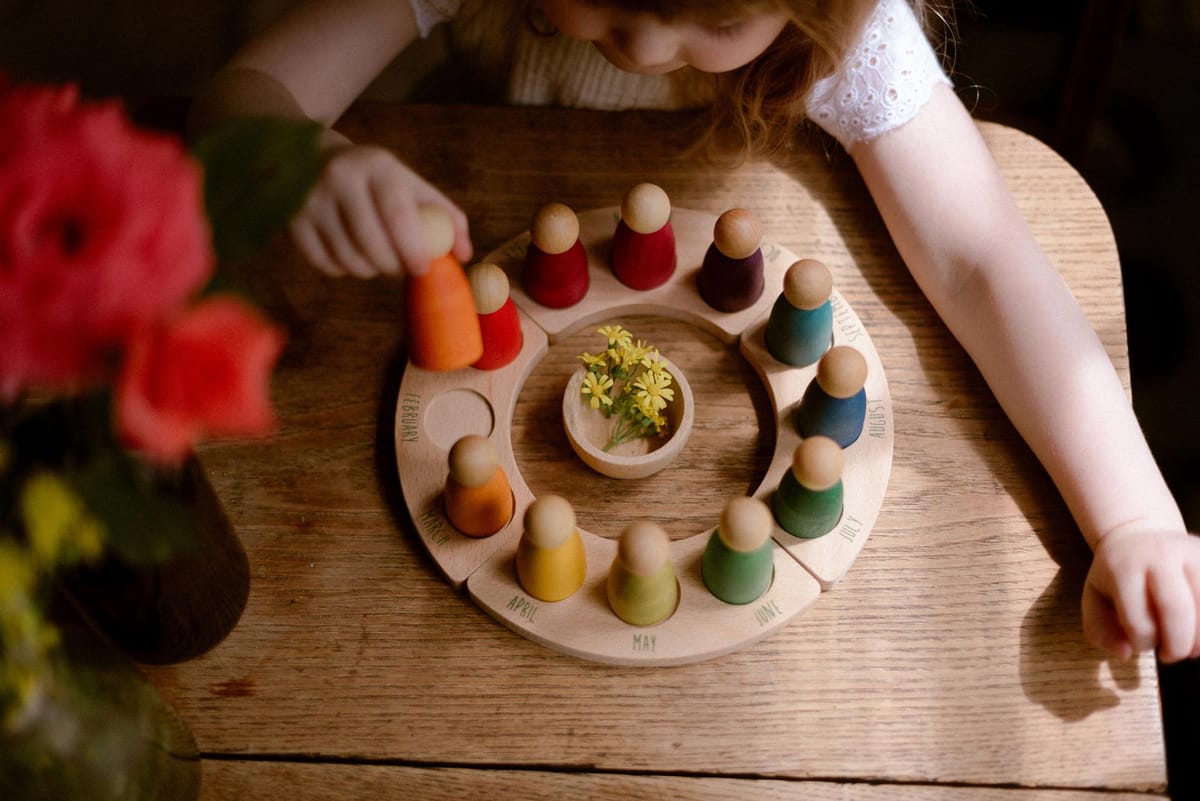Present bias: why now matters more than later
Would you pass the 'marshmallow test'? Could you give up a reward in exchange for something better in the future? It's something children find very hard to do. How can we use this knowledge to nudge them towards more play?

Picture this familiar scene: Your child has a choice between building with her new construction set or watching her favourite show. Even though she was excited about the construction set yesterday, right now the screen feels like the easier choice.
This isn't just about screens being addictive. It's about something psychologists call "present bias" - our tendency to choose immediate rewards over future benefits, even when we know the future benefits would be greater.
Understanding present bias
Present bias affects us all. It's why we scroll through social media instead of reading a book, or grab a biscuit instead of an apple. The immediate reward feels more compelling than the delayed benefit. We might know that reading will be more satisfying in the long run, but right now, scrolling feels easier and more immediately gratifying.
For children, this bias is even stronger. Their brain's ability to think about future rewards is still developing. When faced with a choice between the immediate excitement of a screen and the potential satisfaction of creating something through play, the screen often wins - not because it's more enjoyable overall, but because it's more immediately gratifying.
The Famous Marshmallow Test
In the 1960s, psychologist Walter Mischel conducted what became known as the marshmallow test. Young children were given a choice: eat one marshmallow now, or wait 15 minutes and get two marshmallows. This simple experiment revealed how challenging it is for children to resist immediate rewards for greater future benefits. Fascinatingly, children who were able to wait longer tended to have better life outcomes years later. But here's what's really interesting: the children who succeeded didn't just use willpower - they used strategies like turning away from the marshmallow or pretending it was just a picture. This teaches us something valuable about managing present bias: rather than fighting against it, we can create conditions that make waiting easier.
Why present bias makes screens so appealing
Screens are masterfully designed to work with present bias. They offer instant engagement, quick rewards, and constant novelty. There's no setup time, no effort required, and no delay between wanting entertainment and receiving it.
Traditional play, by comparison, often requires more initial effort. Your child might need to gather materials, think about what to create, or work through early frustration before reaching the satisfying part of play. Even though the ultimate satisfaction might be greater, that initial barrier makes choosing play harder.
Making play immediately gratifying
Instead of fighting present bias, we can work with it. The key is to understand that immediate gratification isn't inherently bad - it's just one way our brains evaluate choices. By making play more immediately rewarding, we can help our children make better choices naturally.
Consider how a young child engages with a simple Play Kit. When materials are thoughtfully arranged and easily accessible, starting play feels effortless. When the first step is obvious - perhaps a half-built creation waiting to be completed - engagement is immediate. This isn't about bribing or tricking children into playing. It's about removing the barriers that make screens feel like the easier choice.
Ten strategies that make play instantly appealing
Present bias can work in our favor when we set up play opportunities that offer immediate satisfaction. Here are ten approaches that make play feel instantly rewarding:
The unfinished invitation. Instead of presenting a blank slate, leave a creation partially complete. An almost-finished marble run, a tower that needs just a few more blocks, or a drawing that suggests possibilities creates an immediate urge to engage. Your child's brain sees the potential for quick success.
The curiosity spark. Add something novel to a familiar Play Kit - perhaps a new tool in the craft box or an unexpected material in the building set. When your child discovers it, her natural curiosity provides instant motivation to explore. The key is to make the addition noticeable but not overwhelming.
The connection moment. Start play together, then gradually step back. "I wonder what would happen if we tried..." or "Look what I discovered..." creates an immediate social reward that transitions naturally into independent play. Your child gets the instant gratification of connection plus the satisfaction of taking over the activity herself.
The project preview. Show your child a simple next step she could add to her ongoing project. "I noticed your fairy garden might need a path to the door..." The suggestion creates an immediate vision of possibility, making it easier to start than to resist.
The satisfaction setup. Arrange materials so the first action leads to immediate success. Water beading up on a painting surface, chalk making bold marks on black paper, or magnetic tiles clicking satisfyingly together all provide instant feedback that draws your child deeper into play.
The natural pause point. Create play opportunities at moments when screens aren't the default - perhaps just after washing hands or before setting the table. Keep a basket of threading beads by the kitchen table for that pause while waiting for dinner, or set up a small world scene on a tray that comes out during snack time. A few wooden blocks or a simple puzzle on the coffee table becomes a natural activity during the transition between coming home and starting homework. When play feels like a natural part of the routine rather than an interruption to screen time, engagement comes more easily.
The visible journey. Keep ongoing projects where progress is visible. A "creation station" or project shelf where work can continue over days helps your child see immediate progress while building towards longer-term satisfaction. Each small addition feels immediately rewarding while contributing to something bigger.
The problem solver. Present a playful challenge that begs for immediate investigation. "I can't figure out how to make this bridge stay up..." or "I wonder if these materials could float..." taps into your child's natural desire to solve puzzles and experiment.
The story starter. Begin a narrative that invites continuation. A few small world figures arranged in an interesting scene, a note from a toy suggesting an adventure, or the first page of a story waiting to be illustrated all create immediate entry points into imaginative play.
The success spiral. Make each play session build naturally on previous successes. When your child discovers she can create something interesting with paper and scissors, casually introduce folding techniques. When she masters those, perhaps origami instructions appear nearby. Each small success creates momentum for the next engagement.
Supporting different ages and stages
For younger children, immediate feedback is crucial. They live very much in the present moment, so play needs to offer instant engagement. This might mean ensuring their first interaction with materials leads to a satisfying result, even if it's as simple as stacking two blocks or making a mark on paper.
As children grow older, they develop more capacity to delay gratification, but the principle remains the same. Play should offer both immediate satisfaction and the opportunity for deeper engagement. A creative project might start with a quick success but open up possibilities for extended exploration.
When screens still win
There will be times when screens feel irresistible - when your child is tired, during transitions, or when she's particularly seeking easy entertainment. These moments aren't failures; they're opportunities to understand when present bias is strongest and plan accordingly.
Notice the patterns. When does your child most often reach for screens? These are the times to make play especially accessible and immediately rewarding. Perhaps it's after school when energy is low, or early in the morning before fully awake. These becoming starting points for creating new patterns.
Building new patterns gradually
Change doesn't happen overnight. Start by making play slightly more immediately rewarding than it is now. Notice what works - which materials engage your child quickly, which times of day she's most receptive to play, which types of play activities provide the most immediate satisfaction.
Gradually build on these successes. Each small win creates a new reference point for your child's brain when evaluating choices. Over time, play becomes the more appealing option not because it's been forced, but because it genuinely feels more rewarding in the moment.
Looking ahead
As you work with rather than against present bias, you'll likely notice something interesting: The immediate rewards of play begin to extend naturally into longer engagement. Just as the children in the marshmallow test developed strategies to manage their impulses, your child will discover that initial engagement often leads to deeper satisfaction.
This is the ultimate goal - not to eliminate screens entirely, but to make play so immediately engaging that screens become less compelling by comparison. When play feels like the easy, obvious, and rewarding choice, present bias works for us rather than against us.
What small change could you make today to make play more immediately rewarding for your child?



Comments ()